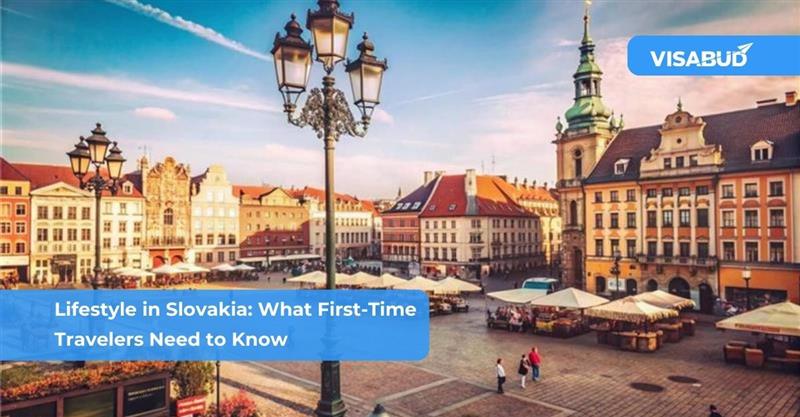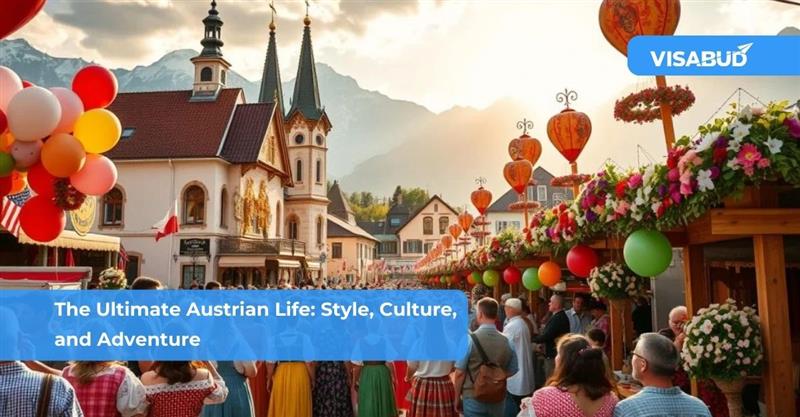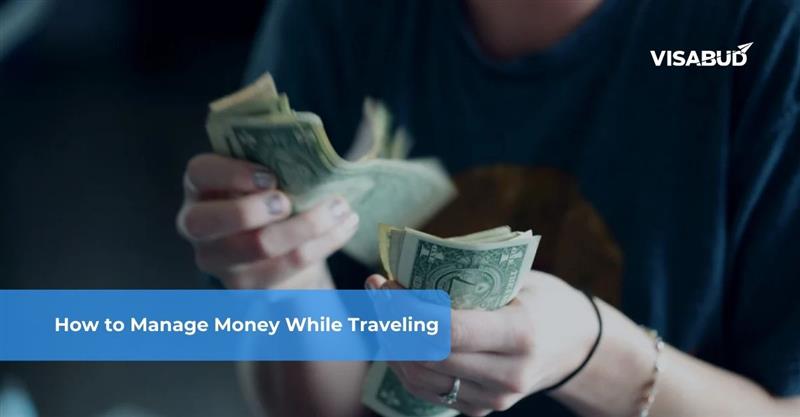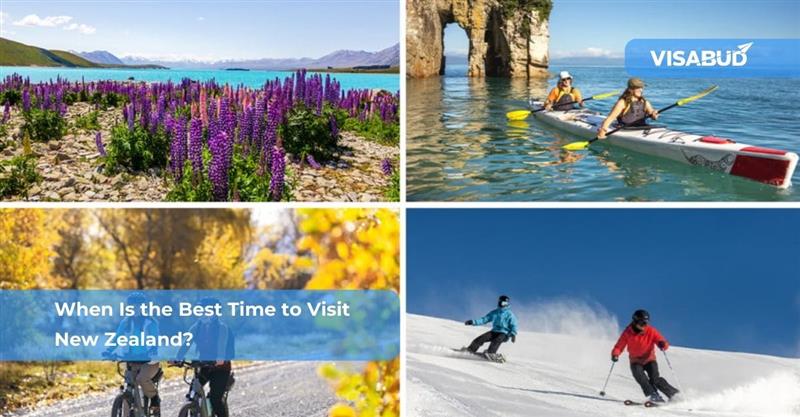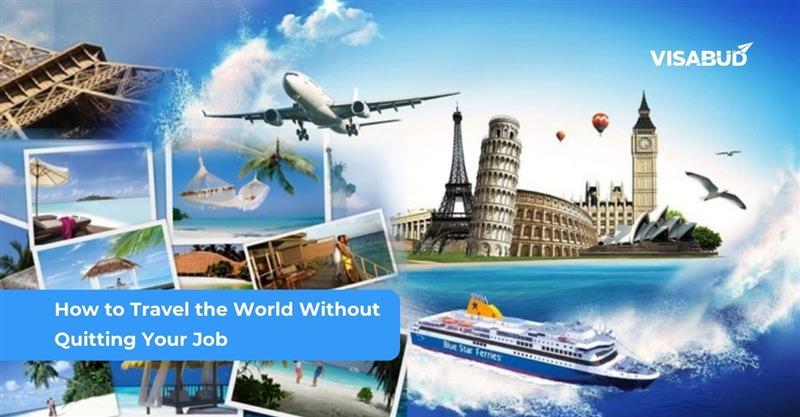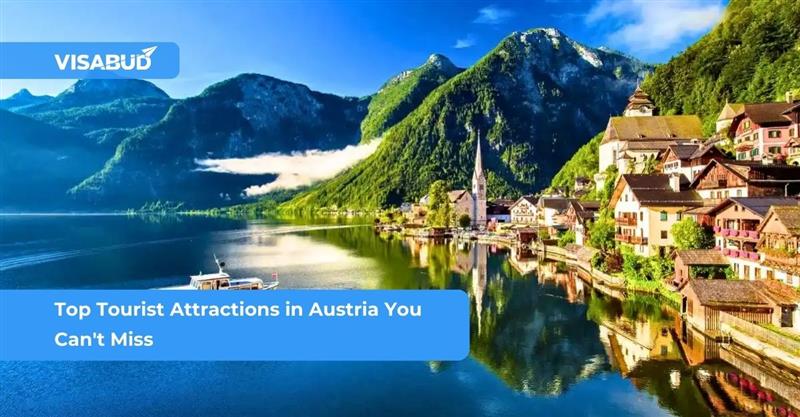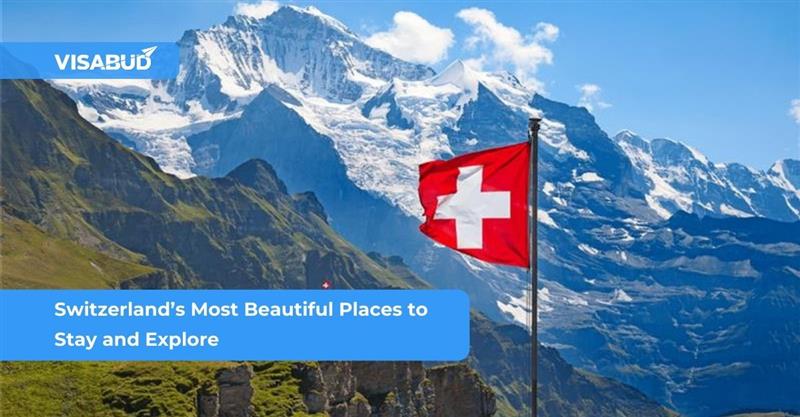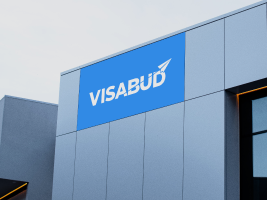Slovakia, a hidden gem in the heart of Central Europe, is often overlooked in favor of its more famous neighbors such as Austria and Hungary. Yet, this landlocked country is filled with breathtaking landscapes, a rich history, and a vibrant culture, making it a perfect destination for first-time travelers. From its stunning medieval castles and charming towns to the majestic High Tatras mountains, Slovakia offers a diverse range of experiences that can captivate any traveler.
The country’s deep-rooted traditions, rich folklore, and distinctive cuisine make it a fascinating place to explore. Whether you’re strolling through the cobblestone streets of Bratislava’s Old Town or relaxing by the serene lakes of the Tatra region, Slovakia promises a unique experience for every visitor. For nature enthusiasts, the country’s national parks, lush forests, and scenic hiking trails offer plenty of opportunities to connect with nature, while those interested in history can visit well-preserved castles and museums that showcase Slovakia’s rich cultural heritage.
In this guide, we will delve into the Slovak way of life, providing you with essential tips for navigating the country as a first-time traveler. We’ll explore its unique cultural aspects, including food, customs, social norms, and much more, helping you adapt to life in Slovakia and make the most of your stay. Whether you’re visiting for a short vacation or planning a longer stay, this article will offer valuable insights to ensure your trip to Slovakia is both enjoyable and enriching. From practical advice to cultural etiquette, we’ve got everything you need to make your journey smooth and memorable.
Slovakia’s Rich and Diverse Culture
Slovakia, with its deep-rooted history and rich traditions, offers a vibrant cultural experience shaped by its historical connections to the Austro-Hungarian Empire and its Slavic origins. While Slovak is the official language, the country is a melting pot of regional dialects and minority languages, such as Hungarian, Romani, and Ruthenian. This diverse linguistic landscape is a testament to the country’s complex history and the variety of influences that have shaped its identity over time.
Key Aspects of Slovak Culture:
Folk Traditions: Slovakia is known for its dynamic folk traditions, which have been passed down through generations. These traditions are especially visible during the numerous festivals held across the country, where locals dress in colorful, traditional attire and perform folk dances. Music is central to these celebrations, with lively tunes played on folk instruments, adding to the festive atmosphere. The folk culture is a cherished part of Slovak life, reflecting the country’s rural roots and close-knit communities.
Art and Architecture: Slovakia’s artistic heritage is a beautiful blend of various influences. From majestic medieval castles that tell the tales of the country’s turbulent history to the baroque churches that reflect the artistic taste of the Austro-Hungarian period, Slovakia’s architectural landscape is both captivating and educational. Cities like Bratislava, the capital, showcase modern architecture, yet its Old Town retains a medieval charm with cobbled streets, colorful buildings, and historic sites. The country’s commitment to preserving its architectural heritage makes it a unique destination for history and art lovers alike.
Cuisine: Slovak cuisine is hearty, flavorful, and deeply rooted in Central European culinary traditions. Traditional dishes often feature rich flavors and are designed to provide energy for the country’s cold winters. One standout dish is bryndzové halušky, a delicious combination of dumplings, sheep cheese, and bacon that has become a Slovak favorite. Other popular dishes include stews, soups, and various types of pastries. Slovak cuisine is also known for its excellent beer, often brewed locally, and frequently enjoyed with meals in pubs and restaurants.
Slovakia’s rich culture offers travelers an authentic taste of Central Europe, blending tradition with history and creating an immersive experience that’s hard to forget.
2. The Slovak Way of Life
Slovak society places a strong emphasis on family, local traditions, and a sense of community, creating a lifestyle that blends modern living with deep-rooted cultural values. The Slovak way of life is often centered around shared moments with loved ones, where family gatherings, outdoor activities, and leisure are priorities. Whether in the vibrant urban landscape of Bratislava or the tranquil settings of rural villages, there are certain lifestyle elements that remain consistent across the country, making it a unique experience for first-time travelers.
Everyday Life in Slovakia
Punctuality: In Slovakia, punctuality is highly valued, whether it’s for business meetings, social events, or even casual gatherings. Slovaks appreciate when others respect their time, and being on time is seen as a sign of professionalism and respect. Whether you’re meeting a friend for coffee or attending an important event, arriving on time will help you make a positive impression.
Relaxed Pace of Life: Unlike the fast-paced, high-pressure lifestyles seen in major global cities like New York or London, Slovakia offers a much more relaxed and laid-back way of life. In cities like Bratislava, while the hustle and bustle of urban life can be felt, there’s still a notable emphasis on slowing down and enjoying life’s little pleasures. Slovaks often take time to stroll along the Danube River, sip coffee in outdoor cafes, or enjoy a quiet afternoon in one of the city’s many parks. This slower pace is especially noticeable in the countryside, where time seems to move more leisurely, and nature plays a big role in daily activities.
Work-Life Balance: The Slovak lifestyle places great importance on achieving a healthy work-life balance. While professional success is valued, Slovaks also prioritize personal well-being and family time. Weekends are often dedicated to spending time with family, whether through leisurely meals or outdoor adventures like hiking or cycling. Many Slovaks enjoy reconnecting with nature, making outdoor activities a significant part of their lifestyle. This balance between work and relaxation ensures that individuals not only succeed in their careers but also nurture their personal lives and mental well-being.
Slovakia’s Natural Beauty and Outdoor Lifestyle
Slovakia is truly a hidden gem for nature lovers, offering some of the most breathtaking landscapes in all of Europe. From the towering peaks of the High Tatras to dense forests, peaceful meadows, and serene lakes, the country’s natural beauty is simply mesmerizing. Life in Slovakia, especially outside the major cities, is closely tied to nature, and embracing the outdoors is a big part of the lifestyle here.
Outdoor activities are a favorite pastime for both locals and visitors. Hiking is incredibly popular, thanks to Slovakia’s extensive network of well-marked trails. The High Tatras, part of the grand Carpathian mountain range, are particularly famous for their stunning hiking routes. Beginners can enjoy gentler forest paths, while more seasoned hikers can challenge themselves with demanding climbs like Gerlachovský štít, Slovakia’s highest peak.
When winter rolls in, Slovakia transforms into a wonderland for skiing and snowboarding. The Jasná resort in the Low Tatras stands out as one of the top winter sports destinations, featuring excellent slopes that cater to beginners and experts alike. The ski season typically runs from December through March, and the snowy landscapes are nothing short of magical.
For those who prefer two wheels over two skis, Slovakia also offers incredible cycling opportunities. Mountain biking enthusiasts will find thrilling trails weaving through wooded hills, while casual riders can enjoy scenic routes along rivers, particularly the well-known Danube Cycle Path.
Whether you’re hiking in the mountains, skiing down snow-covered slopes, or cycling through picturesque countryside, Slovakia invites you to immerse yourself in nature’s wonders. First-time travelers will find that outdoor life here is not just an activity it’s a way of living.
4. Slovak Social Etiquette
When traveling to Slovakia for the first time, understanding the local social etiquette can greatly enhance your experience and help you connect more easily with locals. Slovakia is known for its warm hospitality, but being aware of a few cultural nuances will ensure you leave a positive impression and avoid any unintentional faux pas.
Greetings are an important part of Slovak social life. A firm handshake accompanied by direct eye contact is the standard greeting when meeting someone for the first time. This applies in both professional and casual settings. A friendly smile is also appreciated and helps establish a warm connection. Among close friends and family, you might see greetings with hugs or kisses on the cheek, but these are typically reserved for people who know each other well.
Gift giving holds special significance in Slovakia, especially when invited to someone’s home. It is considered polite to bring a small gift as a token of appreciation. Popular choices include a bouquet of flowers, a box of chocolates, or a nice bottle of wine. If attending a dinner or special gathering, it is customary to compliment the host on the meal and the hospitality provided, as showing genuine appreciation is highly valued.
Respect for elders is deeply rooted in Slovak culture. Elders are treated with a great deal of respect, and it is common courtesy to address them using formal titles unless invited to do otherwise. Offering your seat to an elderly person on public transportation is expected and seen as a sign of good upbringing. In general, showing politeness, using formal language initially, and demonstrating respect in social interactions will go a long way during your stay in Slovakia.
5. Practical Tips for First-Time Visitors to Slovakia
Visiting Slovakia for the first time can be an incredibly rewarding and memorable experience. However, being aware of a few practical aspects can make your journey even smoother and more enjoyable. From understanding local currency to navigating transportation, here are some essential tips every traveler should know before setting off.
Currency:
Slovakia is a proud member of the Eurozone, which means the official currency is the Euro (EUR). You’ll find ATMs easily accessible in cities, towns, and even many rural areas. Most hotels, restaurants, and shops accept credit and debit cards. However, when traveling to smaller villages or exploring local markets, it’s wise to carry some cash, as not all vendors accept cards. Having a few coins and small bills on hand can be particularly useful for things like public transportation tickets or small café purchases.
Language:
The official language spoken throughout Slovakia is Slovak. While English is commonly spoken in larger cities, tourist areas, and among younger people, it’s not universally understood, especially in more remote regions. Learning a few basic Slovak phrases such as “Ďakujem” (Thank you), “Prosím” (Please), and “Dobrý deň” (Good day) can help you connect better with locals and show respect for their culture. A little effort with the language often goes a long way and is usually met with warm smiles.
Transport:
Slovakia offers an efficient and affordable public transportation system that includes buses, trains, and trams, making it easy to explore cities and towns. Tickets are generally inexpensive and can often be purchased at kiosks or online. If you’re planning to venture into the countryside or visit several regions, renting a car might be more convenient, giving you the freedom to explore Slovakia’s scenic landscapes at your own pace.
6. Exploring Slovakia’s Cities: Bratislava and Beyond
While Slovakia’s breathtaking natural beauty often captures the spotlight, its cities are equally rich in culture, history, and charm. A visit to Slovakia would be incomplete without spending time in its vibrant urban centers, where centuries-old traditions blend seamlessly with modern life.
Bratislava, the capital city, is the heart of Slovakia’s cultural and political life. Sitting gracefully along the banks of the Danube River, Bratislava offers an enchanting mix of contemporary living and medieval history. The city’s Old Town is a treasure trove of narrow, cobbled streets, pastel-colored buildings, lively squares, and centuries-old churches. Visitors can wander through charming alleys, relax at outdoor cafes, or explore the many museums and galleries. The city’s unique atmosphere is shaped by its rich history, with influences from Austria, Hungary, and the broader Austro-Hungarian Empire.
Beyond Bratislava, there are several other Slovak cities that offer a glimpse into the country’s diverse heritage. Košice, located in eastern Slovakia, is the country’s second-largest city and a cultural gem in its own right. It is home to the magnificent St. Elisabeth Cathedral, the largest Gothic cathedral in Slovakia, and a vibrant Old Town filled with cozy cafes, art galleries, and lively public spaces. Košice frequently hosts cultural events and festivals, making it a dynamic destination for travelers seeking an authentic Slovak experience.
Another city worth exploring is Žilina, situated in the north-western part of Slovakia. Žilina charms visitors with its medieval architecture, colorful town squares, and proximity to stunning natural landscapes. It serves as an excellent base for adventures into nearby mountains, forests, and lakes, making it ideal for those who wish to combine city sightseeing with outdoor activities.
Whether you prefer the lively buzz of Bratislava, the cultural richness of Košice, or the scenic tranquility of Žilina, Slovakia’s cities promise unforgettable experiences for first-time travelers.
Frequently Asked Questions (FAQs)
1. What is the cost of living like in Slovakia for travelers?
The cost of living in Slovakia is relatively affordable compared to Western Europe. Accommodation, food, and public transportation are budget-friendly, especially outside of Bratislava. VisaBud can also assist you in planning your travel budget more efficiently during your visa process.
2. Is Slovakia safe for first-time travelers?
Yes, Slovakia is generally very safe for travelers. Violent crime is rare, and petty crimes like pickpocketing are uncommon but can happen in crowded tourist areas. Always stay aware of your surroundings. VisaBud recommends checking travel safety tips as part of your trip preparation.
3. What should I know about Slovak culture and etiquette?
Slovaks are warm, respectful, and value politeness. A firm handshake, maintaining eye contact, and greeting people properly (even when entering shops) are common practices. VisaBud offers cultural tips in our travel resources section to help travelers adapt easily.
4. What is the best way to get around Slovakia?
Public transportation is efficient and affordable. Trains and buses connect major cities and towns. For remote areas, renting a car is recommended. VisaBud provides travel planning support, helping you map out your journey along with your visa services.
5. What are must-visit places in Slovakia for first-time visitors?
Apart from Bratislava, travelers should explore Košice, the Tatra Mountains, Orava Castle, and Slovak Paradise National Park. VisaBud’s travel partners offer curated itineraries for those who want to see the best of Slovakia.
6. Do I need travel insurance to visit Slovakia?
Yes, travel insurance is highly recommended, and often mandatory for visa approval. It covers medical emergencies, trip cancellations, and lost luggage. VisaBud can guide you through choosing suitable insurance when applying for your Slovakia visa.
7. How can VisaBud help me with my travel to Slovakia?
VisaBud simplifies the visa application process for Slovakia, making it easy to apply online through your smartphone, laptop, or computer. From document assistance to application tracking, VisaBud ensures a hassle-free experience so you can focus on planning your trip.
Conclusion
Slovakia presents first-time travelers with a truly captivating lifestyle experience that seamlessly blends centuries of cultural tradition with stunning natural landscapes. Whether you are wandering through the medieval streets of Bratislava, exploring the Gothic architecture of Košice, or hiking through the breathtaking trails of the High Tatras, Slovakia offers a perfect balance of adventure, culture, and relaxation.
The country’s charming cities invite visitors to dive deep into its rich heritage, while the countryside offers serene escapes filled with lakes, forests, and mountains. Festivals, traditional cuisine, and the warm hospitality of the Slovak people add to the vibrant tapestry of experiences waiting for you. Slovakia’s relaxed pace of life encourages travelers to slow down, savor every moment, and truly immerse themselves in the local way of living.
For first-time visitors, understanding a few cultural nuances, such as basic Slovak phrases and local customs, can greatly enhance your trip. Embracing the Slovak lifestyle is about more than just sightseeing—it’s about connecting with the country’s spirit, appreciating its traditions, and creating memories that will last a lifetime.
To make your journey to Slovakia even smoother, you can rely on VisaBud, a platform created to simplify the visa application process. Whether you’re at home or on the move, VisaBud allows you to apply for your Slovakia visa easily using your smartphone, laptop, or computer. From assisting with document preparation to tracking your application status, VisaBud ensures that your travel preparations are hassle-free. With your visa sorted efficiently, you can focus entirely on planning your adventures and soaking up all that Slovakia has to offer.
Need help and assistance with your Slovakia trip? Contact us!
